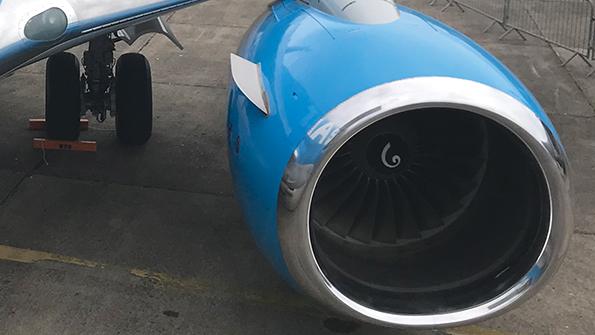
As many as 6,000 737 Next Generation aircraft will be fitted with new nacelles in the next five years.
Four years after investigators recommended that the FAA and Boeing develop retrofits for nacelles on older 737s, the agency has finally signed off on a plan that calls for the work to be done by August 2028.
Boeing will start by finalizing service bulletins detailing the modification work by the end of 2024. Operators will then have until July 31, 2028—or another 43 months—to retrofit their fleets.
The FAA confirmed its approval in an exemption granted to Boeing in early September. The formal exemption process was necessary to allow Boeing to introduce the series of changes incrementally, instead of having the entire redesign approved as a system before retrofits begin. This would put the individual modifications into the fleet more quickly, Boeing reasoned in its exemption request; the FAA agreed.
Boeing’s 737 Next Generation (NG) nacelle redesign focuses on three main areas: new inlet spacers and fasteners, a fan cowl support beam, and a stiffer exhaust nozzle.
The company will add a spacer to the inlet attachment bolts to improve structural integrity. It also will upgrade inlet aft bulkhead fasteners.
Radial restraint fittings on fan cowls will be modified and venting will be added to help ensure they stay closed, intact and attached to the airplane during broken fan blade, or “fan blade out,” events. Fan cowl support beam bolts are also being upgraded.
Finally, Boeing will change the exhaust nozzle attachment area structure to improve its load-handling ability.
The combination is meant to make nacelles less susceptible to breaking apart if a fan blade breaks. Boeing agreed to make the changes following two Southwest Airlines accidents that started with CFM International CFM56-7B engine failures.
During one of those accidents, in April 2018, a piece of fan cowl struck the left-side fuselage and broke the window, starting a chain of events that killed one passenger. That fatality, combined with hazards posed by pieces of nacelle breaking away and endangering the airframe, prompted the NTSB to recommend a redesign.
Boeing filed its initial exemption request in July 2021. It asked for seven years to develop the modifications and get them into the fleet.
The FAA exemption adopts this schedule, with one notable change. Boeing has until the end of 2029 to deliver “solutions to address potential maintenance errors,” such as ensuring fan cowl doors are always secured before flight.
Boeing asked for the relief in mid-July 2023, citing FAA “policy guidance” that requires manufacturers to identify and mitigate human factors-related risks, such as a mechanic leaving a fan cowl door unlatched, as part of certification.
The nacelle redesign must demonstrate compliance with applicable Part 25 regulations. Among them is a requirement to show “no single failure or combination of failures will jeopardize the safe operation of the airplane,” unless the failure involves a structural part and is calculated as being “extremely remote.” This regulation, plus one on extended operations, covers the potential maintenance mishaps that Boeing said it needs additional time to satisfy.
“The FAA finds that while Boeing’s plan to demonstrate full compliance [with applicable regulations] did not fully account for FAA guidance on potential maintenance errors . . . Boeing’s plan does address the potential of an engine fan blade failure,” the FAA wrote in granting the exemption. “Boeing’s requested extension of the exemption maintains the level of safety of the existing exemption by ensuring operators will have service instructions available to begin implementing design changes without change to the original schedule. The revised exemption will allow both Boeing and operators more time to address appropriate solutions to potential maintenance errors, further improving the level of safety of the airplane.”
Regulators around the world are likely to mandate the retrofits, setting the stage for as many as 6,500 aircraft to undergo modifications. Aviation Week Fleet Discovery shows 6,300 737NGs of all types in service and another 230 in storage.
Boeing’s changes are part of a multipronged strategy to address safety concerns raised by the two Southwest accidents. Engine-maker CFM also revised inspection requirements and fan blade life limits.
In each accident, cracked fan blades fractured, triggering a chain of events that included parts of the inlet structure breaking away.
In the April 2018 accident that led to an emergency landing in Philadelphia, parts of the fan cowl structure also broke off. Investigators determined that the blade struck the fan case and transmitted loads to a latch mechanism.
Part of the latch broke away, struck a window and dislodged it, causing a rapid decompression and a passenger fatality.
